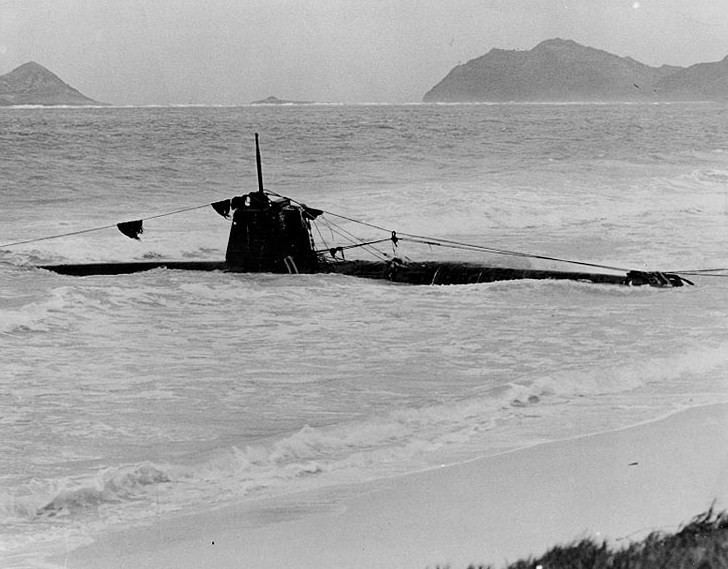 | ||
Japanese submarines in the Pacific War consisted of 169 boats of the Imperial Japanese Navy. During the war Japanese submarines sunk two US aircraft carriers, a cruiser and numerous other warships. Later they became used to resupply isolated island garrisons. The Japanese began the war with an advanced submarine torpedo design, the Type 95.
Contents
Midget submarines
Japanese midget submarines were involved many actions during the Pacific war including the attacks on Pearl Harbor and Sydney Harbour.
Attacks on the American mainland
Japanese submarines shelled and carried out reconnaissance on the continental United States. There were plans for a four boat, 10-airplane attack on the Panama Canal using the I-400 class submarine.
USS Indianapolis
The I-58 sank the heavy cruiser USS Indianapolis shortly after it delivered parts for the atomic bomb Little Boy to the island of Tinian. The loss of the Indianapolis was not noticed for four days, which resulted in the deaths of hundreds of American sailors at sea, and constituted the greatest loss of life at sea in a single incident in the history of the United States Navy (the sinking of the USS Arizona at Pearl Harbor resulted in greater deaths).
Yanagi Missions
After 1942, submarines became the only remaining supply link between Nazi Germany and Japan, and trade was focused on strategic materials, technical plans and blueprints. Only a small number of submarines managed to reach either destination and only four Japanese submarines succeeded in these Yanagi attempts: I-30 (April 1942), I-8 (June 1943), I-34 (October 1943) and I-29 (December 1943).
Before I-29 embarked on her voyage to German-occupied France in December 1943, she had previously rendezvoused with the German submarine U-180 during an earlier mission to the Indian Ocean. During this meeting on 28 April 1943, Indian nationalist Subhas Chandra Bose was transferred to I-29 to become the only civilian exchanged between two submarines of two different navies in World War II.
